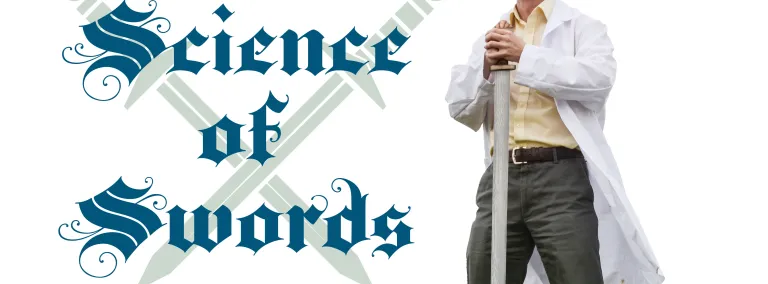The science of swords
Phones, computers, cars, airplanes have one thing in common: they are made of or contain metal.
Look at the world around you—your phone, computer, car, the airplane leaving contrails across the sky. All are made of or include parts made from metal alloys. And you can bet those alloys were designed by metallurgical engineers—perhaps even someone from the South Dakota School of Mines & Technology (SD Mines).
“It is very important to understand the impact that metals have had on our society for thousands of years and the impact metals still have on advancing technology,” said Dr. Michael West, head of the Materials and Metallurgical Engineering Department at SD Mines.
“The principles of modern metal working are exactly the same as blacksmiths used for centuries—working, heating and cooling the metal,” West said. “We just do it on a much larger scale with larger machines and furnaces for modern manufacturing.”
West said students at SD Mines get an introductory hands-on experience to blacksmithing as a way to learn the techniques behind basic metal working principles and gain an appreciation for what happens during the processing of metals.
“It is one thing to talk about processing steel at 1,000 degrees Celsius (nearly 2,000 degrees Fahrenheit) or melting steel at 1,500 C (nearly 3,000 F) in the classroom. It is definitely a unique experience to ‘see’ the temperatures we are talking about first hand when the steel is glowing orange during forging or turns brilliant white as it is melting.”
On Thursday, April 12, West, along with students from the SD Mines’ Back in Black Blacksmithing Club, will discuss the Science of Swords during Sanford Lab’s Deep Talks. West will focus on the impacts blacksmithing and bladesmithing have on the program and the role both play in the modern world. The event takes place at the Sanford Lab Homestake Visitor Center, 160 W. Main St., Lead, South Dakota and includes a blacksmithing demonstration on the observation deck.
“Tying the curriculum with hands-on experience of blacksmithing and bladesmithing helps our students connect the science of metallurgy with real-world applications and gives them an appreciation for the impacts metals have on society,” said West. “It’s also just plain fun.”
Iron swords were likely first forged in about the 12th century B.C. Swords were not widely used until the 8th century B.C. but became the weapon of choice for knights during the Middle Ages. Swords come in many shapes, sizes and metals and success on the battlefield depended on three things.
“A sword is a combination of strength, hardness and toughness,” West said. “In that regard, great care has to be taken during forging and heat-treating to obtain the properties needed. If not, the blade may not have a good cutting edge or may be too brittle to take an impact (this is
“Deep Talks: The Science of Swords” takes place at the Sanford Lab Homestake Visitor Center, 160 W. Main St., Lead, South Dakota. The event begins at 5 p.m. with a social hour and blacksmithing demonstrations; the talk begins at 6 p.m. Light refreshments from Lynn’s Dakota Mart in Lead will be served, along with free beer from Crow Peak Brewing Company in Spearfish for those 21 and older. The presentation begins at 6 pm.
Deep Talks, held in partnership with the Sanford Lab Homestake Visitor Center, is sponsored by Sanford Lab, Lynn’s Dakota Mart and Crow Peak.
